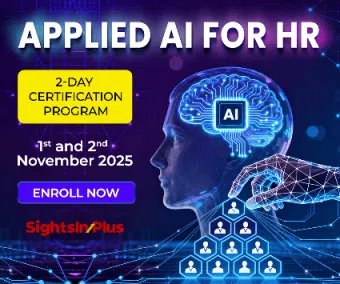In today’s fast-paced business landscape, the race to attract, engage, and retain top talent is more than just a priority—it’s a strategic imperative. The shift from traditional recruitment toward talent acquisition and onboarding as integrated, experience-driven functions reflects a deeper understanding: your company’s long-term success hinges on the moments that define an employee’s beginning.
The Evolution of Talent Acquisition
Talent acquisition is no longer a reactive process. Forward-looking organizations are redefining it as a proactive, data-powered, and brand-driven operation that blends marketing, analytics, and candidate experience.
At its core, modern talent acquisition involves:
- Strategic Workforce Planning: Aligning talent needs with long-term business goals. Hiring isn’t just filling positions; it’s building future capability.
- Employer Branding: Candidates now view job opportunities as consumer experiences. Organizations must actively market their culture, values, and vision.
- Candidate Relationship Management (CRM): Nurturing passive candidates long before requisitions open, much like customer pipelines in sales.
Technology plays a starring role. Artificial intelligence tools can help screen resumes, predict candidate success, and even initiate personalized engagement at scale. Predictive analytics anticipate time-to-fill, while algorithmic matching reduces bias and increases efficiency.
Yet, technology alone isn’t the differentiator—experience is. Organizations must ensure the hiring journey mirrors the employer brand, offering transparency, empathy, and speed. A clunky application process or delayed feedback can derail even the most promising hires.
Onboarding: The Overlooked Powerhouse
Onboarding is more than paperwork and orientation—it’s the first chapter in an employee’s success story. And like any good story, it should be immersive, memorable, and emotionally engaging.
Research consistently shows that a strong onboarding experience boosts retention, productivity, and engagement. However, many companies still treat onboarding as a checklist rather than a strategic endeavor.
Leading organizations are flipping this narrative by:
- Designing Personalized Journeys: Microlearning modules tailored to specific roles, personality types, or learning preferences.
- Integrating Culture Early: New hires are immersed into values, rituals, and behaviors from day one, helping them feel connected and confident.
- Assigning Onboarding Buddies or Coaches: Peer mentorship accelerates relationship-building and encourages informal learning.
- Feedback Loops: Pulse surveys and sentiment analysis capture onboarding quality in real-time, allowing for swift adjustments.
The “experience economy” has reached HR. Onboarding now includes virtual reality tours, gamified training, and interactive storytelling. The goal? Create a powerful emotional connection that anchors the new hire to the company’s mission and community.
Bridging the Gap: A Unified Strategy
Talent acquisition and onboarding often operate in silos. But in a truly agile organization, these functions are unified under a single strategic umbrella. The hand-off between recruiting and onboarding must be seamless—almost invisible.
Consider the journey of a candidate from their first website visit to their 90th day on the job. If recruitment and onboarding work in sync, the individual feels a consistent message, smooth transitions, and continuous engagement.
Best-in-class practices include:
- Shared KPIs: Time-to-productivity, early attrition, and new hire satisfaction tracked across both functions.
- Tech Integration: ATS and onboarding platforms sharing data, ensuring hires aren’t starting from scratch.
- Joint Accountability: Recruiters and onboarding specialists owning new hire success together.
The New Frontier: Experience-Driven Talent Lifecycle
The future of talent acquisition and onboarding lies in treating candidates and new hires as internal customers. This mindset reimagines every interaction as a moment of truth that builds trust, loyalty, and advocacy.
Organizations that embrace this philosophy:
- Invest in journey mapping, identifying emotional highs and lows of the hiring and onboarding process.
- Treat feedback as a product development tool, adjusting processes based on how candidates and new hires feel—not just what metrics show.
- Ensure DEI is embedded, with inclusive sourcing, bias-free assessments, and onboarding programs celebrating diversity from day one.
Final Thoughts
In a competitive hiring market, the talent you need is also the talent everyone else wants. What sets your organization apart isn’t just salary or perks—it’s the authenticity of your culture and the elegance of the experience you provide.
From recruitment marketing to immersive onboarding, the companies that win talent in 2025 and beyond will be those that treat the first 90 days not as a trial period, but as the cornerstone of a lifelong relationship.
It’s time to stop thinking of talent acquisition and onboarding as back-office tasks and start championing them as strategic business drivers. Because in the battle for human capital, experience isn’t just the differentiator—it’s the edge.
Note: We are also on WhatsApp, LinkedIn, and YouTube, to get the latest news updates. Subscribe to our Channels. WhatsApp– Click Here, YouTube – Click Here, and LinkedIn– Click Here.



